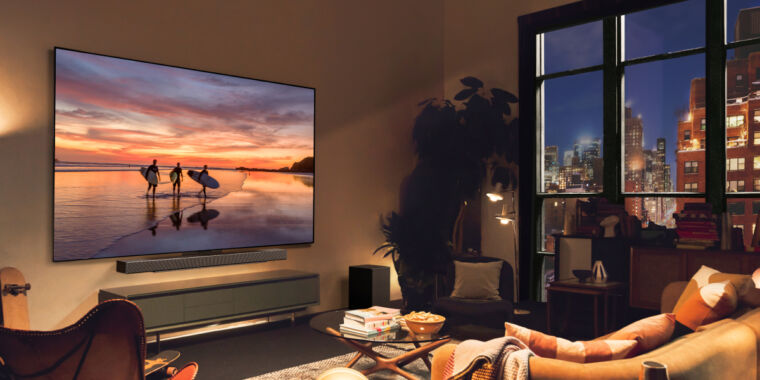The move embodies how ads are a growing and virtually inescapable part of the TV-viewing experience—even when you’re not watching anything.
As you might have expected, LG didn’t make a big, splashy announcement to consumers or LG TV owners about this new ad format. Instead, and ostensibly strategically, the September 5 announcement was made to advertisers. LG appears to know that screensaver ads aren’t a feature that excites users. Still, it and many other TV makers are happy to shove ads into the software of already-purchased devices.
LG TV owners may have already spotted the ads or learned about them via FlatpanelsHD, which today reported seeing a full-screen ad on the screensaver for LG’s latest flagship TV, the G4. “The ad appeared before the conventional screensaver kicks in," per the website, “and was localized to the region the TV was set to.”
LG has put these ads on by default, according to FlatpanelsHD, but you can disable them in the TVs’ settings. Still, the introduction of ads during a screensaver, shown during a pause in TV viewing that some TVs use as an opportunity to show art or personal photos that amplify the space, illustrates the high priority that ad dollars and tracking have among today’s TVs—even new top-of-the-line ones.
The addition of screensaver ads that users can disable may sound like a comparatively smaller disruption as far as TV operating system (OS) ads go. But the incorporation of new ad formats into TV OSes’ various nooks and crannies is a slippery slope. Some TV brands are even centered more on ads than selling hardware. Unfortunately, it’s up to OS operators and TV OEMs to decide where the line is, including for already-purchased TVs. User and advertiser interests don’t always align, making TV streaming platforms without third-party ads, such as Apple TV, increasingly scarce gems.



I pirated for a long time, and even though I had(have) large media libraries and the home server capacity to manage everything just fine, I stopped.
Not sure when, or why, I’m guessing a service broke and I just said fuck it, I already have Prime+Netflix, and that was years ago at this point.
Netflix’s password policy and Amazon showing adds had me spin them up again, and even migrate over to Jellyfin because Plex is just another enshitified privacy nightmare.
Which was a pleasant surprise, because the last I tried Jellyfin years ago, it was not worth the hassle. Also, Plex wasn’t nearly as bad as it is now.
To swing this back around to this article, I’m betting eventually they’ll force their TVs online by disabling features, capabilities, or even the device itself, if it’s not phoning home.